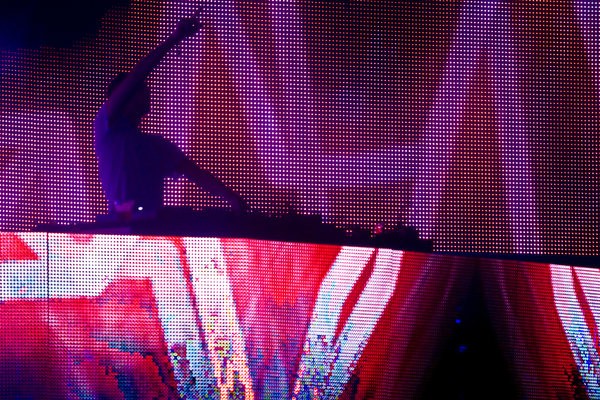EDM is over.
Sure, it might take a couple of years to officially, totally dissipate in the mainstream, but its hold on Top 40 artists and fans alike has begun to wane. I say this as a fan of true electronic music, especially house and techno. I am not a rockist, merely a fan of 0’s and 1’s eager for the myriad of other electronic genres to finally get their due. And now, the slow death of EDM is here, and thank goodness for that. It was felt deeply and most recently at two different Chicago music festivals, the brand new Mamby on the Beach and the beloved stalwart Lollapalooza.
Our current definition of EDM, in comparison to house, techno, or simply electronica, grew in the aughts. In an article for The Guardian titled “How rave music conquered America," Simon Reynolds charted how EDM grew out of a techno-rave scene that swept the country in the ’90s. EDM eventually concentrated in festivals rather than raves, fueling its emphasis on culture and atmosphere over music. EDM may stand for "electronic dance music," but it is most frequently associated with the American version of dubstep (otherwise known as "brostep").
Blame Lady Gaga for its mainstream success in the United States. The pop star was the first American artist of the aughts to popularize the sort of europop that made vocalists such as Roisin Murphy and Kylie Minogue so popular overseas. Her thorough reliance on heavy, dirty synths—the brainchild of producer RedOne—became an infectious antidote to the most popular club music of the day: rap-sung collaborations. Soon, other pop stars adopted the same aesthetics, with everyone from Rihanna (who first entered the market as an R&B pop star clone of Beyonce) to Taylor Swift (who took a stab at the genre on “I Knew You Were Trouble” from the 2012 album Red) incorporating the wobbly, dubby synths that were now the norm on the radio.
The genre’s biggest star, however, was Skrillex, an artist who was possibly better known for his physical appearance (those glasses, that half shaved, side mullet hair cut) than the music he made. Skrillex—and his brand of bratty brostep—defined everything that was wrong with EDM, even if he wasn’t the sole culprit of its ills. But Skrillex appears to have taken a major step away from the genre. In 2013, he and Diplo (another artist who quickly transitioned music genres based on what became popular) formed Jack U. Their latest release, “Where Are U Now,” featuring Justin Bieber of all artists on vocals, includes elements of music genres that have bubbled under the surface for years—trap, deep house, balearic pop. It is a considerably light, summery song from producers who trafficked in “bangers.” It is the antithesis of easy, EDM-approved Molly highs. The song peaked on the Billboard Hot 100 at No. 8, higher than any other track Skrillex released as a solo artist.
Consider, too, Chicago's Wavefront Music Festival, which dropped on the city in 2012. Wavefront featured a variety of different dance genres including house, techno, and the then-peaking EDM. That variety would ultimately prove to be its downfall. The fest was unable to find a secure location after noise complaints from 2013 and 2014. So along came its next iteration: Mamby on the Beach.
Mamby on the Beach, which took place in early July at Oakwood Beach in Bronzeville, followed Wavefront's electric-genre variety. It featured indie dance pop (Passion Pit, Empire of the Sun), smooth techno (George Fitzgerald, Matthew Dear), disco (James Murphy), and classic house (Farley Jackmaster Funk). EDM itself, however, was nowhere to be heard.
At Lollapalooza, especially on Perry’s stage, otherwise known as the festival's EDM playground, the lineup was less critical than years past. Featured headliners included Kaskade and Alesso, compared with previous years that included Zedd, Calvin Harris, and Skrillex himself. Kaskade’s music, for one, is a far cry from the blaring brostep of yore. At 44, Kaskade has been in the game since 1989, never truly abandoning the house that made him a name.
Likewise, Alesso, who Kaskade's junior by 20 years, brought his brand of progressive house that relies heavily on synthetic piano and the prettiest of vocals (Tove Lo on “Heroes (We Could Be)” or Roy English on “Cool”). It made for a funny contrast to the day’s main headliner, Metallica. If EDM is no longer the loudest stage of the festival, something is changing.
Whether this signals a collective change for other artists remains to be seen, but even Lady Gaga has abandoned ship. Her latest album was collection of duets with Tony Bennett featuring covers of classic jazz standards. Rather than putting it all out with outrageous costumes and heavy, penetrating synths, she let the music speak for itself. And it worked. That’s about as far from EDM as one can get.



